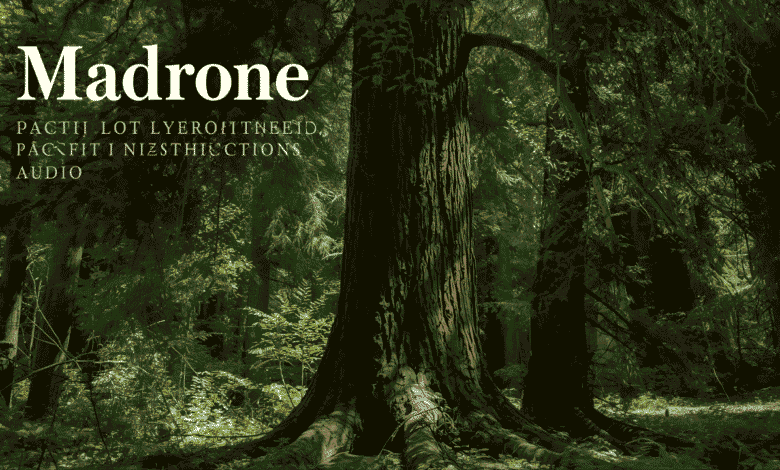Madrone in Lushootseed Pronunciation Audio: Understanding the Name and Cultural Significance

The study of indigenous languages offers a unique insight into the traditions, culture, and environment of native communities. One such language is Lushootseed, historically spoken in the Pacific Northwest. Among the various terms preserved in this language, the naming and pronunciation of plants hold both linguistic and cultural significance. In this article, we explore the madrone in lushootseed pronunciation audio, its dialectal variations, and the importance of preserving indigenous plant names.
Understanding Lushootseed and Its Plant Naming Traditions
Lushootseed is a Salishan language primarily spoken in the Puget Sound region. The language has a rich phonetic system that includes glottal stops and ejective consonants, making pronunciation unique and distinct from English. Plant names in Lushootseed are not just labels; they are deeply intertwined with cultural practices and ecological knowledge. The madrone, known scientifically as Arbutus menziesii, has several Lushootseed names, reflecting variations in dialects and communities. Studying madrone in lushootseed pronunciation audio provides insights into how speakers maintain the integrity of their language while connecting to the environment.
Dialectal Variations in the Name of Madrone
Different Lushootseed-speaking communities use different terms for the madrone tree. In some dialects, madrone is referred to as RuOec. This form is most commonly associated with the TTW dialect region. In other communities, particularly in the Puyallup area, madrone is called qʷuƛ’əc. These variations highlight the linguistic diversity within Lushootseed and show that even a single species of tree can have multiple names depending on local usage. By examining madrone in lushootseed pronunciation audio, learners can understand these subtle differences and appreciate the richness of the language.
The Importance of Accurate Pronunciation
Pronunciation in Lushootseed is critical because a slight mispronunciation can change the meaning of a word entirely. Audio recordings of madrone in lushootseed pronunciation audio help learners, linguists, and language enthusiasts grasp the correct articulation of the word. The consonants, glottal stops, and tonal nuances present in Lushootseed make such audio a necessary tool for accurate language preservation. Listening to madrone in lushootseed pronunciation audio allows learners to mimic the sounds and develop a deeper connection to the language.
Using Audio to Learn Lushootseed Plant Names
The integration of audio in learning Lushootseed plant names offers a practical approach to language acquisition. Madrone in lushootseed pronunciation audio provides learners with the opportunity to hear the word repeatedly, compare dialectal differences, and understand the rhythm and flow of Lushootseed speech. Language programs that provide madrone in lushootseed pronunciation audio often include phonetic guides to help learners approximate the sounds, enhancing the learning experience. By focusing on a specific plant like madrone, learners can practice both vocabulary and pronunciation skills simultaneously.
Cultural Significance of Madrone in Lushootseed Communities
The madrone tree holds cultural and ecological importance in Lushootseed-speaking communities. Its wood, bark, and berries have been traditionally used for food, medicine, and ceremonial purposes. Understanding madrone in lushootseed pronunciation audio is more than just a linguistic exercise—it connects learners to the cultural heritage and environmental practices of the people who have named and used this tree for generations. Pronouncing the name correctly shows respect for the language and the traditions associated with the plant.
Learning Tips for Pronouncing Madrone in Lushootseed
For those interested in mastering madrone in lushootseed pronunciation audio, it is essential to focus on a few key strategies:
- Listen to the audio multiple times to internalize the sounds.
- Pay attention to glottal stops and consonant clusters, which are common in Lushootseed.
- Compare the variations between dialects to understand regional differences.
- Practice repeating the word slowly, gradually increasing speed to match natural speech.
- Use the audio as a reference whenever encountering the word in written form.
By following these steps, learners can achieve a more accurate and respectful pronunciation of madrone in Lushootseed.
Challenges in Documenting Lushootseed Plant Names
Documenting Lushootseed plant names, including madrone, involves challenges. Dialectal differences, limited audio resources, and the intricate phonetic system make it essential to rely on native speakers and community language programs. Madrone in lushootseed pronunciation audio is therefore a vital resource for researchers, educators, and language enthusiasts. Without these recordings, the risk of losing accurate pronunciation increases, which could affect the preservation of both language and cultural knowledge.
Resources for Learning Madrone in Lushootseed
While finding audio of madrone in lushootseed pronunciation audio can be challenging, several language programs and ethnobotanical initiatives aim to preserve Lushootseed plant names. These resources often provide recordings of multiple plants, including madrone, allowing learners to study and repeat the pronunciations at their own pace. Using these resources enhances comprehension, supports cultural understanding, and aids in accurate pronunciation.
The Role of Audio in Language Preservation
Audio plays a critical role in preserving endangered and culturally significant languages like Lushootseed. Madrone in lushootseed pronunciation audio not only ensures that learners pronounce the word correctly but also helps maintain the oral traditions of the community. Through repeated listening and practice, audio recordings keep the language alive, passing knowledge of plant names and cultural practices to future generations.
Conclusion
Madrone in lushootseed pronunciation audio serves as a bridge between language, culture, and ecology. By understanding the correct pronunciation, learners can appreciate the linguistic diversity, respect cultural heritage, and connect with the environment in meaningful ways. Dialectal variations like RuOec and qʷuƛ’əc reflect the richness of Lushootseed, while audio recordings ensure accurate pronunciation and ongoing preservation. For anyone interested in indigenous languages, studying madrone in lushootseed pronunciation audio is a practical and culturally enriching experience.
FAQs: Madrone in Lushootseed Pronunciation Audio
1. What does madrone in Lushootseed mean?
Madrone in Lushootseed refers to the native Pacific Northwest tree, scientifically called Arbutus menziesii, and its name varies by dialect, such as RuOec or qʷuƛ’əc.
2. Why is madrone in Lushootseed pronunciation audio important?
Audio helps learners accurately pronounce the word, preserving the language’s unique sounds, including glottal stops and ejective consonants, which are difficult to represent in writing.
3. Are there different Lushootseed words for madrone?
Yes, madrone has dialectal variations, including RuOec in the TTW dialect and qʷuƛ’əc in Puyallup and southern dialects.
4. Where can I find madrone in Lushootseed pronunciation audio?
Language programs, tribal archives, and educational resources often provide recordings of Lushootseed plant names, including madrone.
5. How can I practice pronouncing madrone in Lushootseed?
Listen to audio recordings repeatedly, pay attention to glottal stops, mimic the pronunciation, and compare dialectal variations for accuracy.



